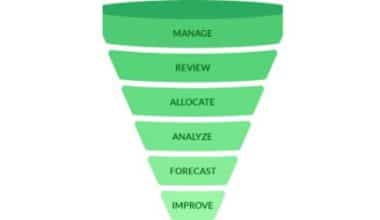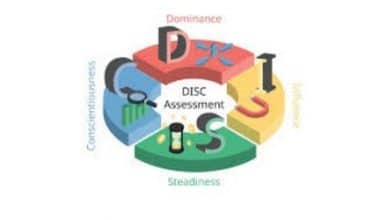Have you ever seen an advertisement for a product and immediately felt compelled to buy it? Consider what would happen if anyone who saw the same advert just wanted the product. Think about it; to satisfy all of the buyers, the manufacturer would need enough inventory on hand to ensure that anyone who wanted a piece of the product got one. Demand is the concept of consumers needing a commodity, while supply is the concept of products in stock. Although the concept seems simple, what happens if a business is unable to meet demand? What happens when the demand for a commodity is so low that it sits on the shelf? This is where demand management, or the method of forecasting and planning product demand, comes into play. In this article, we’ll go through the basics of understanding demand management.
Overview
Demand management is the process of determining potential demand and preparing how to meet it. Companies must consider a variety of factors in order to effectively meet demand. First and foremost, they must attempt to comprehend their clients. What do their clients desire? They must also think about publicity. If you want to sell more goods, you’d need to improve the product’s commercialization. Companies’ rates and promotions can also have an effect on demand.
For instance, we all enjoy sales! Consider the product from the ad you saw earlier. Let’s say you really want a product but it’s just too costly and out of your price range. That means you’ll have to pass off on the product and move on. If the product’s manufacturer, on the other hand, wishes to run a promotion and advertise it through another ad, you may find that it is now within your budget. You can now buy the item at a discounted price. This is an example of how businesses shape demand.
What is demand management, and how does it work?
For those in search of a comprehensive definition of demand management, well here’s one;
Demand management, also known as consumption management or strategic spend management, entails keeping track of and monitoring the needs of various business units as well as other internal buying operations. Demand management practices assist companies in avoiding supply and demand shortages as well as improving supplier relationships. And coupled with addressing external spending variables, coordinating purchasing orders, and eliminating waste, demand management strategies play an important role.
What Is the Goal of Demand Management?
The purpose of your demand management process is to understand the market and the demand chain first, and then build an operational strategy to meet the market where it is. Once you have your demand strategy, you can establish project portfolios and use portfolio management to execute them.
Demand management’s essential elements
Depending on the particular processes of each company, demand management may include a broad range of disciplines. A demand management strategy, on the other hand, usually includes the following core components:
#1. Forecasting
Forecasting entails more than simply entering data into a spreadsheet, creating a basic view of expected revenue based on that data, and then making adjustments to the business plan. When several scenarios are included in the forecasting phase, the organization is prepared for practically any unforeseen twist or turn.
Our post on cash flow forecasting and demand forecasting should help you get a grip of what forecasting entails in general.
#2. Supply chain management
The marketplace is extremely competitive, regardless of the industry. Furthermore, the supply environment can be constantly changing, with new suppliers entering the market or existing suppliers going out of business. However, if businesses are not prepared to react to these changes and instead wait for them to happen, they risk falling behind the competition.
Organizations will prepare themselves for sustained success regardless of what happens in the global business world by maintaining broad insights into the strengths and business health of all suppliers.
#3. Demand Analysis
Making demand decisions solely on the basis of sales data may be a big mistake for businesses. The majority of ERP systems monitor sales based on when a product was delivered rather than when it was first ordered. They can only paint a reasonable image of the company’s demand—and then strategize about how to fulfill the demand year after year—if they keep an accurate view of order history.
#4. Sales and operations planning
The notion that a supply chain company should function without the input of executives, is no longer true. Organizations that make and distribute goods have adopted sales and operations over the last two decades in order to include a broader variety of stakeholders in every supply chain decision—and to integrate supply chain knowledge and needs into every business decision.
With insightful and agile business solutions, you will stay one step ahead of your competitors in the industry.
What are the benefits of effective demand management?
Effective demand management is solely dependent on accurate data, and collaborative demand forecasting, in which companies agree on the anticipated amount, timing, mix, and position of demand both internally and with their supply chain partners. This information should serve as a shared ground for merchandising, logistics, and budgeting. In exchange, the following benefits of demand management should be realized:
- Competitive advantage.
- Improved supply chain operations.
- Enhanced Revenue Generation
What are the Complexities of demand management?
There are a few common issues that arise when implementing Demand management. This starts with totally ignoring the following;
- Automated algorithms, or how the parameters on replenishment systems have been set.
- Sales balancing act, which entails collaborating with retailers to develop demand modeling in order to assess the timing, level, and position of promotions.
- Elusive signals, refer to manufacturers that lack a data system or a mechanism for collecting, storing, and analyzing point-of-sale data from retailers.
Demand Management vs. Demand Planning
Ability to properly assess demand directly correlates with output by developing detailed insight within the operation. This talks about how much to manufacture, how much to produce within a given time frame, how much inventory to keep on hand, and so on. Demand planning and management are critical components of a manufacturing process. But while demand planning and management are related, the two processes are totally different. So it’s crucial to consider the differences between the two systems in order to make the most of them.
Demand planning is the process of forecasting long-term consumer demand for a company’s products or services. It’s usually linked to sales, but it’s also linked to supply planning, which aims to ensure that a company has enough supplies to meet market demand. A company’s demand-planning process can help sustain production levels that match or slightly exceed demand.
Demand management, on the other hand, is similar to demand forecasting, but it focuses on short-term customer demand. Demand management is the monitoring of current consumer demand in order to prevent a business from losing money.
When it comes to taking advantage of business opportunities in response to local events, demand management is far more capable than demand planning or forecasting.
What Is Demand Management in Procurement?
You’ll receive an offer for a book deal once a publisher decides it wants your book based on your proposal. That offer will include a monetary amount known as an advance. An advance is a lump sum of money paid by the publisher upfront (sort of) in exchange for you finishing your book in a certain amount of time.
What Are Differences Between Forecasting and Demand Management?
A forecast is a prediction of demand based on previous data. The demand plan begins with the forecast but then considers other factors such as distribution, where to store inventory, and so on.
What Are the Types of Demand Management?
There are two distinct categories of demand: dependent and independent. Demand for finished goods is an example of independent demand because it is not dependent on the demand for raw materials. Finished items include any item sold directly to a consumer.
What is a demand plan?
Demand planning is the process of forecasting demand for a product or service in order to produce and deliver it more efficiently and to customer satisfaction. Demand planning is regarded as an important step in supply chain planning.
What Are the 3 Concept of Demand?
Effective demand is comprised of the desire, willingness, and capacity of an individual to pay for a product.
What Are the Four Steps to Managing Demand Effectively?
Data preparation for analysis.
Measuring the currency, coverage, and precision of data.
Fully understand how order fulfillment affects your projections.
Managing data surges that may or may not reflect actual demand.






